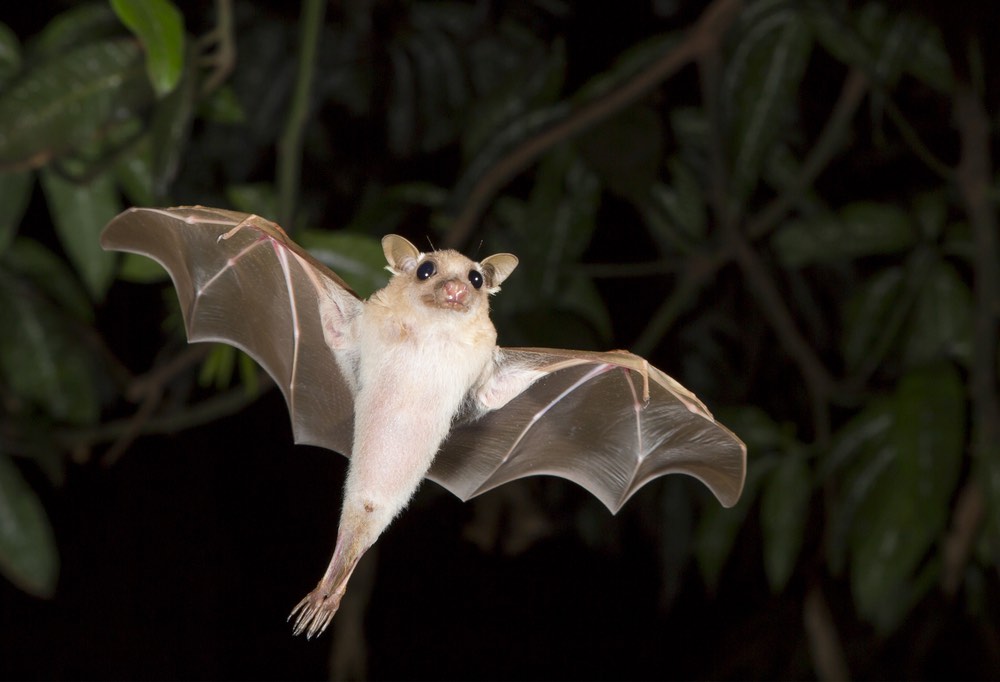Are Bats Really Blind?

Bats hunt in the dark using echolocation, meaning they use echoes of self-produced sounds bouncing off objects to help them navigate. But that doesn't mean that bats can't see.
Contrary to myth, bats aren't blind. In fact, research shows that depending on the circumstances, bats sometimes prefer using eyesight to sound when hunting. And many fruit bats, which drink nectar rather than hunt insects, don't echolocate at all. These species have particularly sharp vision, and some can even see ultraviolet light.
There are at least 1,300 species of bat, according to the advocacy group Bat Conservation International, and those species are a diverse bunch: Some feed off flowers; others eat insects; and three (all Latin American species) feed off blood.
So different species have evolved different visual abilities. Researchers reporting in a 2009 study in the journal PLOS ONE, for example, found that Pallas's long-tongued bat (Glossophaga soricina) and Seba's short-tailed bat (Carollia perspicillata), two small bats from South and Central America, have visual receptors enabling them to see in daylight and to see some colors. In fact, some of the receptors may enable these bat species to see ultraviolet light, wavelengths of color that are outside of the human visual spectrum. [How Far Can the Human Eye See?]
This ability may be useful because many flowers reflect UV light, and both bats rely on plants for food. The long-tongued bat laps nectar like a hummingbird, and the short-tailed bat eats a mix of fruit, flowers and insects. (Other bat species have been found to have UV vision capabilities, as well.)
Vision and echolocation seem to work together in many species. Rousettus aegyptiacus, the Egyptian fruit bat, has sharp vision and echolocation abilities. In a 2015 study published in the journal Current Biology, researchers found that bats echolocate more the darker it is, but keep making their clicking sounds even in bright light. They especially sped up echolocation as they landed after flight, suggesting they combine information from sight and sound to gauge distances accurately, the researchers wrote.
Even insect-hunters use vision when they can. Scientists found that the brown long-eared bat (Plecotus auritus), an insectivore, preferred hunting best when it had both visual and sonar information to work with — but visual input was preferred to sonar alone, they reported in 2003 in the journal Animal Behaviour. One of the most common bats in North America, the little brown bat (Myotis lucifugus), has visual receptors that probably allow it to navigate by moonlight and to avoid predators at dusk, a 2009 study found.
Get the world’s most fascinating discoveries delivered straight to your inbox.
So, the next time you get ready to call someone "blind as a bat," you may want to think about the visual capabilities of these nighttime fliers.
Original article on Live Science.

Stephanie Pappas is a contributing writer for Live Science, covering topics ranging from geoscience to archaeology to the human brain and behavior. She was previously a senior writer for Live Science but is now a freelancer based in Denver, Colorado, and regularly contributes to Scientific American and The Monitor, the monthly magazine of the American Psychological Association. Stephanie received a bachelor's degree in psychology from the University of South Carolina and a graduate certificate in science communication from the University of California, Santa Cruz.



